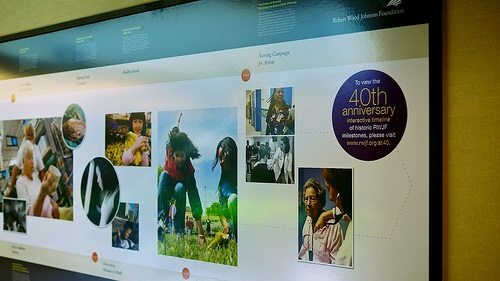
June 25, 2014; Philadelphia Inquirer
The $8.8 billion Robert Wood Johnson Foundation (RWJF) has a long history of supporting programs and services seeking to help more people receive better healthcare. In a major shift announced by the Foundation’s CEO, Risa Lavizzo-Mourey, at the Aspen Ideas Festival, RWJF will forego disease-specific and condition-specific initiatives and educational support for medical specialists. Instead, the Foundation will focus its nearly $400 million in annual giving on supporting a diverse array of ideas that involve patients, businesses, community leaders, and others.
Sign up for our free newsletters
Subscribe to NPQ's newsletters to have our top stories delivered directly to your inbox.
By signing up, you agree to our privacy policy and terms of use, and to receive messages from NPQ and our partners.
Describing the “Culture of Health” initiative, Lavizzo-Mourey cited examples, including programs that set up patient advisory committees at hospitals to give feedback on what works and what doesn’t from the patient’s point of view, and initiatives that identify innovative tools developed by nurses that may have broader market potential. RWJF is also interested in programs that reach out from hospitals and clinics to businesses and the community to influence health and wellness. Addressing a long-neglected issue, RWJF is working with a grantee to facilitate integration of mental health and physical healthcare delivery in an effort to improve patient outcomes and reduce health care costs.
RWJF’s shift in emphasis from medicine-based disease to community-focused healthcare promotion shares its key philosophical basis with the Affordable Care Act (ACA), or Obamacare, which seeks to reduce healthcare costs by decreasing the use of medical services through the promotion of health. It is believed that decreased reliance on relatively expensive surgeries and medications can be achieved through promotion of healthy lifestyle choices and access to chronic disease management services.
Will this approach be successful in “bending the cost curve,” as advocates predict? One of RWJF’s challenges, shared across the healthcare industry, is funding the right metrics to measure success on a both program-specific and broad community levels. It’s a lot easier to talk about surgeries performed, doctors trained, and hospitals served than it is to measure how a specific initiative results in a healthier community or population. To be sure, there are process-based measures in both approaches, but the new paradigm places a premium on outcomes. RWJF can find evaluation ideas being used by public health experts in their work and by hospitals themselves in their required community health needs assessment (CHNA) processes.—Michael Wyland













